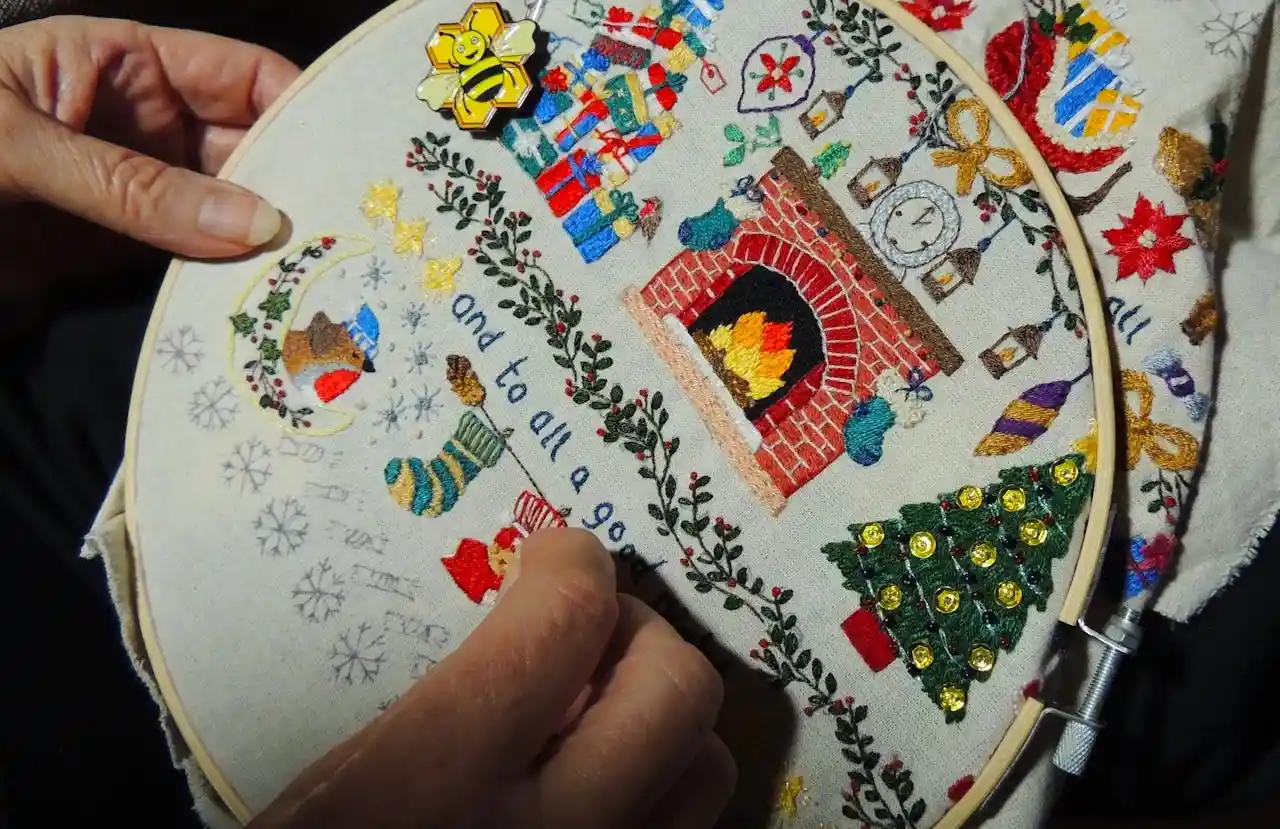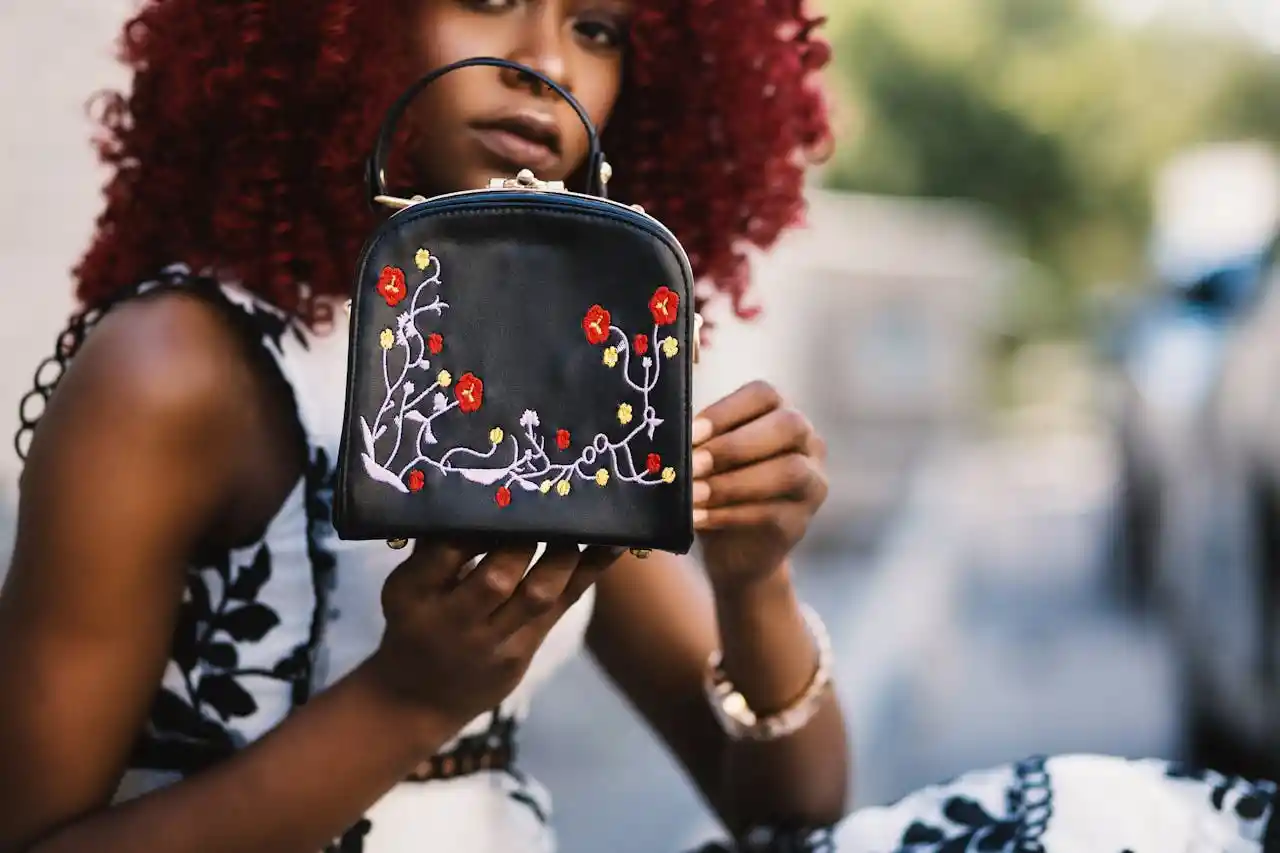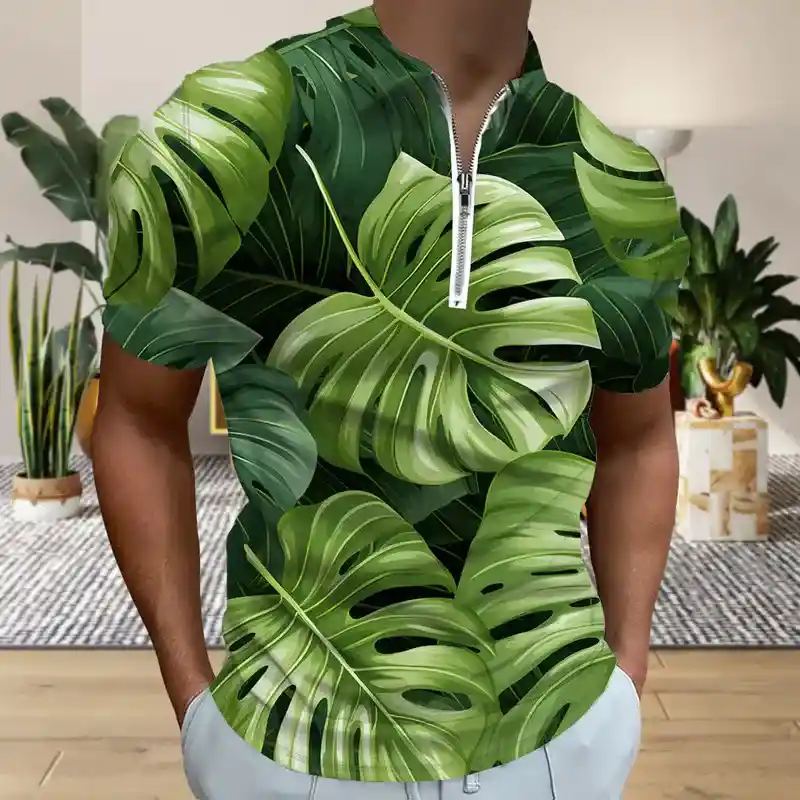
If you're thinking about decorating apparel—whether it's for your brand, your team, or your next big event—embroidery and screen printing are two methods that really stand out.
Each approach has its own benefits, costs, and ideal use cases, which can make choosing between them a bit tricky.
In this guide, we provide a clear summary of both techniques along with the key points you need to know to decide when (and when not) to use each. We'll also explore when combining both makes sense, and what other options you might consider for more complex designs.
Understanding Embroidery
You've seen embroidered logos on shirts or tote bags, right? Embroidery uses needles and thread to stitch designs onto fabric. A machine or skilled hands follow a digital pattern or guide. It's like sewing art.
The needle punches through, laying down colorful threads to form your design. Think of it as drawing with thread. Each stitch builds texture and depth. Modern machines make it fast, but it's still a craft rooted in tradition.
Pros
- Solid: Stitches hold up well through washes and wear.
- Professional look: Adds an elegant, raised texture.
- Perfect for small designs: Great for logos or names.
- Works on many fabrics: From cotton to thicker jackets.
Cons
- Not ideal for complex designs: Fine details can get lost.
- Cost: More expensive, especially for large orders.
- Time-consuming: Takes longer than some other methods.
- Not great for large areas: Big patterns aren't embroidery's strength.

Understanding Screen Printing
Ever wonder how bold designs end up on your favorite t-shirt? The answer is screen printing. It's a process of pushing ink through a mesh screen overlaying fabric. Every color in your design requires its own screen.
You lay a screen over the fabric, coat it with ink, and force the ink through with a squeegee. Ink adheres to the fabric, and a bright image is made. This approach is most effective with flat surfaces such as tees or posters.
Pros
- Bright colors: The colors you want to stand out.
- Cost-efficient for bulk: Less expensive for bulk orders.
- Speedy process: It can print a lot of print jobs quickly.
- Great for big projects: Lays out big areas nicely.
Cons
- Limited detail: Fine lines and intricate details may not print clearly.
- Less ideal for thick or textured fabrics: Works best on smooth, flat materials.
- Longer setup time: Each color needs its own screen, which can increase prep time.
- Durability varies: While generally long-lasting, prints may fade or crack over time with frequent washing.

Embroidery vs Screen Printing: Key Differences
Choosing between embroidery and screen printing can feel tricky—but don't worry, you've got this. Here's a simple breakdown to help you see how they stack up side by side.
Feature | Embroidery | Screen Printing |
Look & Feel | Raised, textured stitching. Feels more 3D. | Smooth and flat. Like ink on paper. |
Best For | Polos, jackets, hats—thicker materials. | T-shirts, hoodies, tote bags—flat fabrics. |
Design Complexity | Great for simple logos or text. | Handles detailed or colorful designs better. |
Color Limitations | Limited thread colors—usually fewer than 10. | Can use many ink colors (but each adds setup). |
Durability | Super long-lasting. Stays sharp after many washes. | Still strong, but can fade or crack over time. |
Cost | More expensive per piece, especially in small runs. | Cheaper for big batches. |
Setup Time | Quick for small orders. | Longer setup, especially for multi-color jobs. |
Professional Look? | Looks more polished or premium. | More casual and fun, especially for bold prints. |
Each method has its own style and strengths. Embroidery feels classic and neat. Screen printing brings color and creativity. Now that you see the difference, you're already one step closer to the right choice for your project.
How to Choose Between Embroidery and Screen Printing
Deciding between embroidery and screen printing can feel tricky. Both methods create awesome designs, but they suit different needs. Let's break it down.
Embroidery gives a classy, raised look. It's perfect for small logos or names on items like caps or hoodies. If you want a design that pops with texture and feels high-quality, go for embroidery. It's vivid and great for simple designs.
But it can blur fine details or make small text hard to read. It also costs more, especially for larger orders.
Screen printing shines for bold, detailed designs. It's cleaner for intricate patterns or thin fonts on flat surfaces like t-shirts. You'll save money with bigger orders, and it's closer to your original design.

However, the ink might fade over time, and it's less effective on thick fabrics.
Think about your design. Is it simple or complex? For small, textured logos, pick embroidery. For large, detailed graphics, choose screen printing.
Consider your budget. Screen printing is cheaper for big runs, while embroidery feels premium but costs more.
Who's your audience? If it's friends and family wanting a sharp, affordable design, screen printing might win. If they value a fancy, tactile look, embroidery could be better.
- Embroidery: Best for small, simple logos; premium feel; higher cost.
- Screen printing: Great for detailed designs; budget-friendly for bulk; less durable.
Weigh your priorities. Match the method to your design and goals.
Read More:
- Screen Printing vs. Digital Printing: Which Print Method Is Better
- Sublimation Printing vs. Screen Printing: Key Differences
Embroidery + Screen Printing: Better Together for Maximum Impact
Sometimes, using just one method—either embroidery or screen printing—doesn't give you the full effect you're looking for. That's where combining the two can really help.
Embroidery adds texture and dimension. It creates a raised, tactile feel that stands out. It's often seen as high-quality and works especially well for text or logos that need to feel solid and bold.
Screen printing, on the other hand, is cleaner and more detailed. It's great for areas that require sharp lines, bright colors, or more complex images. Flat graphics, gradients, or subtle design elements come through more clearly with ink than thread.
Many designs include both text and image. In these cases, using a mix of embroidery and screen printing can balance things out.
You might embroider the brand name to give it weight, while screen printing the surrounding artwork to keep it crisp and true to the original design.
This combo also works when you're trying to match style with budget. Embroidery tends to cost more, especially for large or detailed areas. Screen printing is more affordable for bigger runs.
By choosing which parts to embroider and which to print, you can stay within your budget while still making the design pop.
Here's how combining both can work well:
- Embroider the name for emphasis
- Screen print the image for clarity
- Use embroidery on shoes, and screen printing on tees
Together, embroidery and screen printing can create a more balanced, eye-catching result. You don't always have to choose one over the other. Sometimes, the smartest choice is to use both—strategically.

Complex Design? Explore Alternatives to Embroidery and Screen Printing
When your design is complex, with many colors and fine details, embroidery and screen printing might not be the easiest or cheapest options.
Embroidery, for example, can get very expensive when your design has multiple colors or large areas. Some designs need tens of thousands of stitches, especially if placed on bigger items like jackets.
This not only raises the cost but also the time it takes to finish the job. Plus, embroidery machines need a special digital file, and making that file alone can cost extra.
Screen printing isn't always perfect for small runs of complex designs either. Setting up multiple screens for each color can cost a lot.
If you only want one or two pieces, the setup fees don't make it worth it. But if you order many shirts, screen printing becomes more affordable because the setup costs get spread out.

Custom AOP Zip Polo Shirts for Men Slim Fit with Print on Demand - PrintKK
So, what if you only want a few items or your design has too many colors?
Here are some alternatives you might want to try:
- Direct-to-Garment (DTG): This is like using a regular printer on fabric. It handles many colors and details well, perfect for small orders.
- Direct-to-Film (DTF): Similar to DTG but uses a transfer film. It works on many fabrics and can be cost-effective for fewer pieces.
- Heat Transfers: Modern heat transfers have great quality and can handle complex designs without extra setup costs.
- Sublimation: This works best on white polyester fabrics and produces bright, permanent prints.
If your design is very detailed, simplifying it before printing or stitching might help reduce costs and improve the final look.
In the end, choosing the right method depends on your design, budget, and how many items you want. Knowing these alternatives gives you more freedom to get your idea made without breaking the bank or losing quality.
So, Which Is Better for You, Embroidery or Screen Printing
Both embroidery and screen printing have their strengths. Embroidery is durable and adds texture—great for simple logos and thicker fabrics. Screen printing handles color and detail better, especially for bulk orders on t-shirts and similar items.
If your design is complex or your order is small, consider alternatives like DTG, DTF, or heat transfers.
In the end, the best choice depends on your design, budget, and how many items you need.










 Global Shipping
Global Shipping


 Made in USA
Made in USA



























